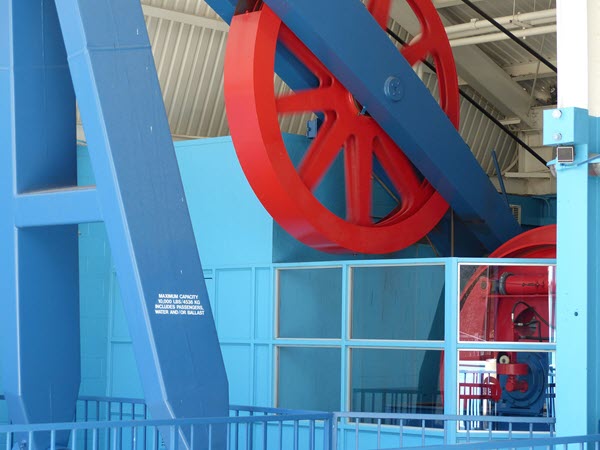Why ESP migration is “Lift and Innovate,” not “Lift and Shift”
Almost everybody in the email world has gone through a technology platform migration. But few share my perspective as a tech user, platform vendor, and now head of an agency that shepherds enterprise-level companies through the migration maze.
Today's technology can do things I couldn't even dream of when I started with email a quarter-century ago. But one thing has not changed: Migrations are still hard. Switching from one platform to another can be as stressful as switching banks. The process can take a year or more, and the stakes are higher than ever.
My agency wanted to find out what drives marketers to put themselves through the torturous process that begins even before you build a request for proposals and continues even after you hit the "start" button on your new platform.
So, we surveyed enterprise marketers' attitudes toward technology and migration for our report, The State of the Technology Migration Process in Enterprise Organizations . It includes contributions from my fellow member of Only Influencers (OI) and RFP expert Chris Marriott of Email Connect. We came up with plenty of surprising findings, some of which I'll reveal a few paragraphs down.
(Quick promotion: Chris is heading up the 2024 State of ESP Functionality Survey , sponsored by OI, Email Connect, and Email Innovations World. After you finish reading my post, jump over to it and have your say!)
Migrations fueled by innovation now, not just replacement
"Dazed and confused" describes many marketers I talk with who are exploring a tech migration, particularly with significant platforms like email service providers.
During COVID-19, many discovered how deficient their platforms were, with the lack of data access, segmentation, personalization, and most or all service levels. Email became the savior when companies had to shift their messaging almost overnight. Some platforms made it easy. Many did not.
Those failures initially spurred companies to replace their obsolete systems with platforms that let them move faster, work flexibly, and incorporate data for better messaging. But in the space of just a couple of years, we're moving from replacement to innovation.
Companies don't want merely to fix the failures of the past. They want to get out in front of change and use it to help their companies stay competitive.
AI is driving that shift, especially among ESPs. Marketers want to know, "What can AI do for me at scale?"
Some ESPs struggle to create a workable offering, but others have developed robust systems that change the game for everybody. We've seen these first-hand in demos and through our client work, and we can attest that these ESPs are creating amazing experiences for their marketing customers.
This evolving shift in interests, expectations, wants, and needs fueled the desire to understand how marketers' attitudes and organizational factors are driving migrations.
What prompted our survey?
We set out to understand the decision-making process behind tech migrations. What internal factors drive the need to explore new platforms? How often do marketers review their tech stacks? Are they happy with the status quo?
We also wanted to know how marketers felt about the migration process. How experienced were they? Did they feel up to the task of moving platforms? After all, breaking up with technology is no small thing. It affects so many processes and systems within and beyond the marketing department – not just the day-to-day work of creating and sending campaigns but also the internal processes for doing the work.
4 findings from the survey
1. Marketers might be overconfident about their ability to manage a transition.
We learned that 48% of our respondents had been involved in three full tech transitions or newer, while 14% never went through one. At the same time, 92% say their companies can manage a complete migration. Put those two statistics together, and you can see why I called the migration scene "dazed and confused."
Just going through migration doesn't mean the process succeeded. Instead, it probably ended up as a mess that took way too long, disrupted too many operations, and cost the company way more than it expected to spend.
Migration is more than "lift and shift." You aren't just unplugging one system, moving the data over, and plugging in the new one. Instead, your guiding principle should be "lift and innovate." Migration is the one time you have to get under the hood of your tech platform and make system-wide changes in customer journeys, template design, copy, campaign timing, and more.
If you're doing an RFP, you need help from your internal team to get consensus and agreement and have a spirit of partnership to plan what's best for the entire organization. My advice here is always to seek counsel and consensus because it's the team that gets the migration done, not just the ESP.
2. Companies who are seeking change in their martech stack list efficiency/productivity as their top reason (67%), followed by cost savings (52%), and staying competitive in the market (48%).
The age-old reasons for seeking a change have been price, customer satisfaction, and alignment on executing marketing goals. That's always been the mantra for the industry.
But now we see that sophistication for the platform is becoming more important, and that's because of AI and its integration into the tech stack at multiple touchpoints. The need for efficiency and productivity emphasizes that we are looking for systems that make our lives easier. We want to get away from systems and platforms that make campaign-building a struggle or require external vendors by default to be able to do so at scale.
The pressure on email marketers is greater every year. Marketers are looking for platforms that make the work easier, with fewer hoops to jump through. AI can help with that, but the change has made us get smarter, better, and faster with our marketing and do it for less money.
We're not saying "Cheaper is better." We are saying, "Cheaper with more functionality" is what companies want. Marketers need to say to their prospective vendors, "Demonstrate how this will be easier and what you think I should do with the time savings you're providing."
3. Of the companies we surveyed, 25% evaluate their marketing technology for potential updates at least quarterly, and another 40% evaluate at least annually.
The first question we ask potential migration clients is how they use their technology right now. Commonly, people switch platforms because they don't have the functions marketers need. Our audits often reveal their platforms have those functions, but people aren't using them.
When I was at Responsys, we surveyed our users on what they were using and found most customers were using 20% of the functions our platform offered them. That percentage hasn't changed much.
Today, our agency often will talk someone out of doing an RFP because our pre-RFP audit finds that what they want in a platform exists in the technology they're using now, but they haven't set up integrations, hooks, or processes to make those functions work. Or, the integrations are there but they're too complicated to use.
The 25% who are reviewing their tech stacks quarterly are doing it right. An annual review is just too long of an interval. You want to be part of an email platform that is evolving. That should be part of the quarterly business review you do with your ESP.
You do this so you can be up to date on what you use. But you also are holding your ESP responsible for evolving the platform. Ask them what new functions they're exploring or what they're launching to become or stay competitive.
4. Budget constraints are the top challenge (50%) associated with adding or replacing martech components, with integration complexities (41%) and delays in implementation (39%) rounding out the top three reasons.
Budget has always been a problem, but that should not stop you from running an RFP.
Every ESP hates RFPs that are running solely to check prices. You don't have to run an RFP with other suitors just to find out what they have going and justify the spend.
When you switch platforms, you have to do a cost-benefit analysis. You have to show how the new platform will help you drive growth, not just replicate the same old processes.
Integration complexities and the delays in implementation make things interesting. We've seen this over the years and have developed a product to avoid this.
Migrations are messy because they usually lack planning. The typical implementation process starts with the contract signing. Then the ESP sends a spreadsheet you fill out with everything that has to move over. Then you start tossing stuff over the fence for the new ESP to integrate.
Lack of preparation and proper planning makes migrations take twice as long and creates that "lift and shift" mentality instead of "lift and innovate." Things get left behind, or you run out of time to move everything over and make sure it functions correctly.
Chris Marriott will tell you that timing is everything. Not just for an RFP but for the contract processing and implementation. We always tell clients to spend a good chunk of time planning the migration process based on their internal processes, people, data integrations, and bandwidth. You'll save more time if you follow a blueprint of how your migration will happen and in what order you start migrating things.
Wrapping up
My agency has been managing migrations for 19 years. We've been at the forefront of many major integrations, and I've been part of some of the biggest in our industry. I've been through some real doozies!
Some were simple enough that we could get through them in six weeks, and some were so complex that they're still going on after a couple of years.
Migrations are messy beasts because you're opening the hood on something that someone built 10 years ago, the person who coded the API is long gone, and you have no notes about what they did or why they did it.
Migrations are hard. At some point, they'll make you regret your decision to switch platforms. But it doesn't have to be that way.
Besides sharing our findings in our white paper, we also passed on tips for making the entire RFP-to-implementation process less painful and more productive. Our best advice is this:
Conduct a thorough, independent, and structured RFP that isn't influenced by new shiny toys. Then, plan for a "lift and innovate" strategy instead of "lift and shift."
You can get your copy here. I hope you enjoy reading it, learning what enterprise companies are doing, and then applying the findings when it's your turn to go through the RFP process.
Okay, bye!
 Photo by Allen Perper on Unsplash
Photo by Allen Perper on Unsplash

 How to resolve AdBlock issue?
How to resolve AdBlock issue? 
 Ryan Phelan is Managing Director of RPEOrigin.
Ryan Phelan is Managing Director of RPEOrigin.